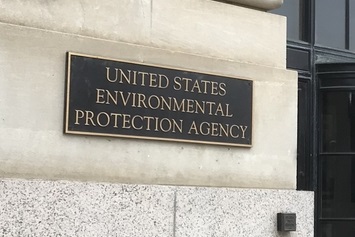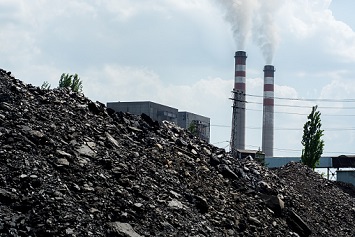Depending on who is talking, the federal government is either meeting its obligations to ensure that environmental justice (EJ) is provided equally to all U.S. citizens or is merely taking credit for progress on EJ that is either not occurring or is falling well short of what is needed.
A recent hearing of the House Subcommittee on Environment and Climate Change brought attention to four ways the federal government addresses EJ—responding to complaints of environmental injustice; the performance of all federal agencies in the Federal Interagency Working Group on Environmental Justice (EJ IWG); provision of federal EJ grants; and federal regulatory actions on coal combustion residuals (CCRs).
EJ is a special responsibility of the EPA, and the Agency plays a key role in each of these four areas. Primarily, the EPA has specific responsibilities under the federal environmental statutes to provide all Americans with clean air, water, and land and also to protect all Americans from the perils of dangerous chemicals in commerce. Furthermore, the Agency serves as chair of the EJ IWG. The EPA is certainly fulfilling some of its EJ responsibilities. For example, it considers the impact of certain regulations it promulgates on minority and disadvantaged groups. It also dispenses grants intended to turn brownfields sites into economic opportunity zones. But the Agency’s record on responding to EJ complaints is spotty. Also, the EPA does not appear to exert much influence over the other 16 federal agencies comprising the EJ IWG. For example, the Government Accountability Office (GAO) reports that most of the agencies of the EJ IWG do not even have a method to determine how and if they are meeting the EJ goals they’ve established for themselves.
At the hearing, Rep. Frank Pallone, Jr. (D-NJ), who chairs the House Energy and Commerce Committee, emphasized that environmental injustice is an unresolved issue in the United States.
“It is an unfortunate, but inescapable fact that where you live in this country determines the extent of the environmental health risks you face,” said Pallone. “Air pollution, contaminated sites, waste disposal sites, and drinking water violations all impact overburdened communities.”
EO and the CRA
Much of the federal government’s direction on EJ derives from two documents.
Executive Order (EO) 12898 issued by President Bill Clinton in 1994. The EO:
- Directed federal agencies to identify and address the disproportionately high and adverse human health or environmental effects of their actions on minority and low-income populations to the greatest extent practicable and permitted by law;
- Directed each agency to develop a strategy for implementing EJ;
- Promoted nondiscrimination in federal programs that affect human health and the environment, as well as provided minority and low-income communities access to public information and public participation; and
- Established the EJ IWG with the EPA as chair.
Civil Rights Act (CRA) of 1964. Title VI of the CRA prohibits discrimination based on race, color, or national origin in programs or activities that receive federal financial assistance. To carry out and enforce the provisions of the act, federal agencies developed programs to receive and investigate allegations of discriminatory actions taken by recipients of federal funding.
Resolving Complaints
The Subcommittee heard testimony from Lilian Sotolongo Dorka, director of the EPA’s External Civil Rights Compliance Office (ECRCO). The ECRCO is responsible for enforcing several federal civil rights laws that together prohibit discrimination based on race, color, national origin (including limited English proficiency), disability, sex, and age in programs or activities that apply for or receive financial assistance from the EPA. The ECRCO investigates and resolves external complaints, develops policy, conducts proactive compliance initiatives and reviews, and provides technical assistance to recipients and outreach to communities.
The EPA’s nondiscrimination regulation requires that after the EPA acknowledges receipt of a complaint, the ECRCO must make a jurisdiction determination within 20 days to decide whether it will accept the complaint for investigation or reject it. Additionally, the regulation requires that for complaints accepted for investigation and that remain under investigation, the ECRCO must issue preliminary findings within 180 days.
The ECRCO recently received a poor review in Are Rights a Reality? Evaluating Federal Civil Rights Enforcement , a statutory report written by the U.S. Commission on Civil Rights (USCCR). The USCCR states that the ECRCO has “struggled to manage its caseload.”
“EPA ECRCO has, in the history of the office and during the specific time period studied for this report [Fiscal Year 2016 to Fiscal Year 2018], issued only a handful of findings of civil rights violations and in one case secured corrective action to remedy the violation,” states the USCCR.
One result of the ECRCO’s struggles with deadlines, the USCCR continues, is that in June 2018, a federal court ordered the ECRCO to timely process any pending and future race-based discrimination complaints submitted by plaintiffs and accepted by the EPA for investigation.
In her testimony, Dorka conceded that the Agency does not have a sterling record on resolving complaints. For example, by the end of 2016, the ECRCO had 61 cases pending in various stages—most of which had missed the regulatory deadlines. In 2017, the ECRCO received 24 additional complaints, further increasing the significant number of unresolved cases. The ECRCO has addressed the backlog by putting in place a number of tools. These include a strategic plan specifying measurable docket-management goals; additional training for staff; a case resolution manual that provides “clear guidance to staff about how to process a complaint from start to finish”; and a compliance toolkit that explains the application of the federal civil rights laws and the civil rights legal standards used in investigating and resolving civil rights complaints.
Dorka says that these and other measures have been “transformational.”
“By December 2018, EPA had completely cleared its docket of all overdue jurisdictional determinations, and as of November 2019, we have resolved all overaged complaints that required preliminary findings,” testified Dorka.
Dorka said the ECRCO provided comments to the USCCR on a draft of its report. While not commenting on the final report in her testimony, Dorka remained concerned about the USCCR’s perspective.
“Given our transparency about past challenges and our significant forward strides, we feel it is imperative for USCCR, and other organizations, to report on EPA’s civil rights program in a way which is credible, grounded in fact, and based on a clear understanding of the legal framework within which EPA operates,” testified Dorka.
Federal Agencies
In his statement before the committee, Alfredo Gomez, director of Natural Resources and Environment at the GAO, reviewed the EJ actions of all EJ IWG agencies and appeared somewhat frustrated by the GAO’s inability to determine what these agencies are achieving.
“Agencies’ progress in identifying and addressing environmental justice issues related to their missions is difficult to gauge because most of the agencies do not have updated strategic plans and have not reported annually on their progress or developed methods to assess progress,” stated the GAO.
More specifically, according to Gomez:
- The agencies have not comprehensively assessed how EJ fits with their overall missions. Seven of the 14 agencies that developed EJ strategic plans assessed and discussed how their EJ efforts aligned with their overall missions after 2011. However, the other 7 agencies did not clearly show how their efforts aligned with their missions.
- The agencies have not consistently issued annual progress reports. Fourteen agencies issued at least one progress report after 2011, but most have not issued such reports every year—as they agreed to do in the EJ IWG’s 2011 Memorandum of Understanding . The GAO called attention to the Department of Defense and the Small Business Administration, which have not issued progress reports at all.
- Most agencies have not established methods for assessing progress toward goals. The agencies’ progress reports generally describe the EJ activities they conducted but do not include methods to assess progress (e.g., performance measures). According to Gomez, 4 agencies—the Departments of Agriculture, Health and Human Services (HHS), Interior, and EPA—have established performance measures or milestones for their EJ efforts. Of these 4, HHS and the EPA have reported on their progress toward achieving their performance measures or milestones. The other 12 agencies have not established any performance measures or milestones.
The EPA agreed with the GAO’s recommendation to develop guidance or create an EJ IWG committee to develop guidance on methods agencies could use to assess progress toward their EJ goals.
Brownfields Grants
Several witnesses testified on the benefits of the EPA’s Brownfields grants program. Grants can serve a number of purposes, including direct funding for brownfields assessment, cleanup, revolving loans, environmental job training, technical assistance, and research. Helena Wooden-Aguilar, deputy associate administrator of the EPA’s Office of Policy, testified that the Agency is particularly interested in helping economically distressed communities build opportunity zones.
“I am pleased to highlight that, in late October, EPA announced the selection of 26 organizations to receive a total of $5.1 million in Brownfields grants for environmental job training programs across the country,” said Wooden-Aguilar. “All 26 organizations will serve communities located in Opportunity Zones. In addition, our Brownfields program provided substantial grant funding to help communities revitalize Brownfields sites, recognizing that putting these properties back into use creates many economic and environmental benefits throughout communities. In FY [fiscal year] 2019, EPA provided more than $60 million in Brownfields grant funding to communities across the country to assess, clean up, and redevelop underutilized properties.”
A strong endorsement for the EPA was also offered by Patrick B. Ford, executive director of the Lebanon/Marion County [Kentucky] Industrial Foundation.
“The grant programs offered by the EPA are the last federal program, to my knowledge, of all federal programs, that are eligible for ‘FRONT END’ money, or ‘site-ready’ money, that can be accessed to prepare sites for economic development, private investment, and job creation,” said Ford. “EPA assistance levels the playing field between brownfields and greenfields. The EPA has created programs specifically to reduce the risk of developing on Brownfield sites; which without redevelopment would remain vacant and unkempt. Minimizing that risk is essential to attracting private investment to these sites.”
Coal Ash and EJ
Ruth Santiago, an environmental attorney, testified that EJ communities—where residents are predominantly people of color and/or low-income—are disproportionately impacted by exposure to CCR, “as with so many other environmental hazards.”
Santiago has long battled against a 454-MW coal-burning power plant in Guayama, Puerto Rico, that generates about 300,000 tons of CCRs “in conscious disregard of the health and safety of nearby communities.” Since the plant’s planning phase, AES, which owns the facility, has maintained that the CCRs are not waste since AES mixes and compacts the CCR into a product AES markets as AgremaxTM; this has exempted the AgremaxTM pile from regulations. But under the Obama EPA’s 2015 CCR rule, AgremaxTM became indistinguishable from CCRs and, therefore, a CCR pile subject to all the requirements applicable to CCR landfills.
However, in August 2019, the Trump EPA proposed a rule that would allow CCR piles to escape requirements for groundwater monitoring, dust control plans, cleanup, limits on height and volume, inspections, liners, and closure and post-closure maintenance.
“Alongside various communities, Puerto Rico remains at the forefront of the environmental justice fight,” testified Santiago. “Our people have suffered for over a decade due to coal ash contamination from AES’ coal plant and its egregious disposal practices. EPA must always consider these realities when addressing CCR disposal and cleanup—rather than weaken the existing safeguards, it must protect the environment and health of communities and not cater to industry.”



